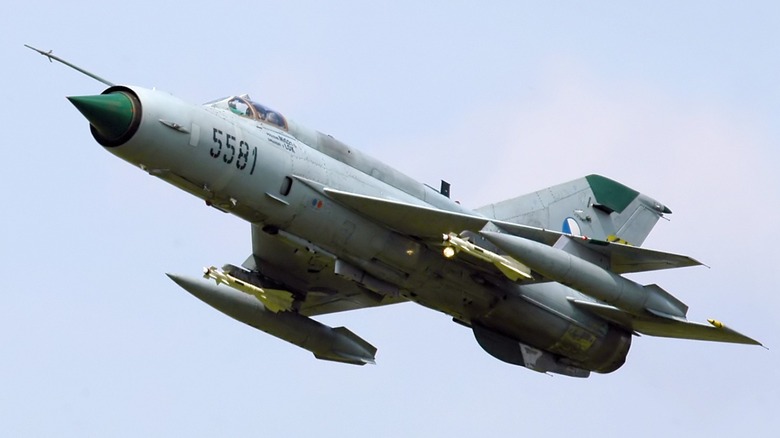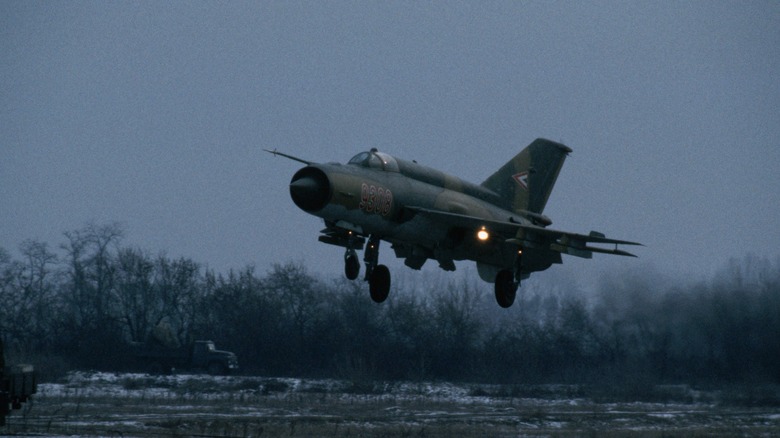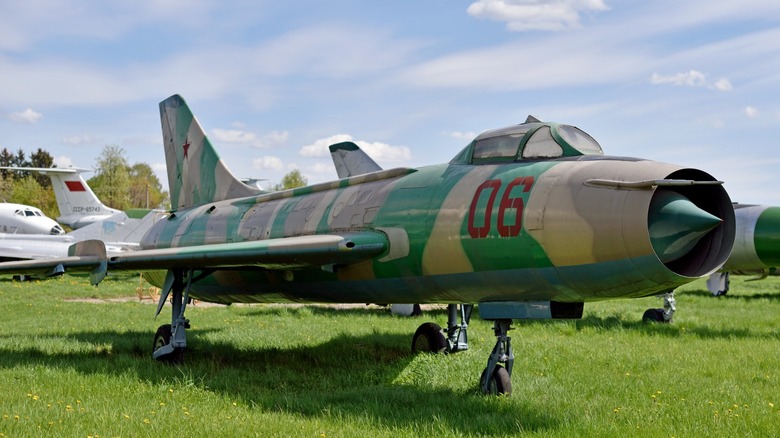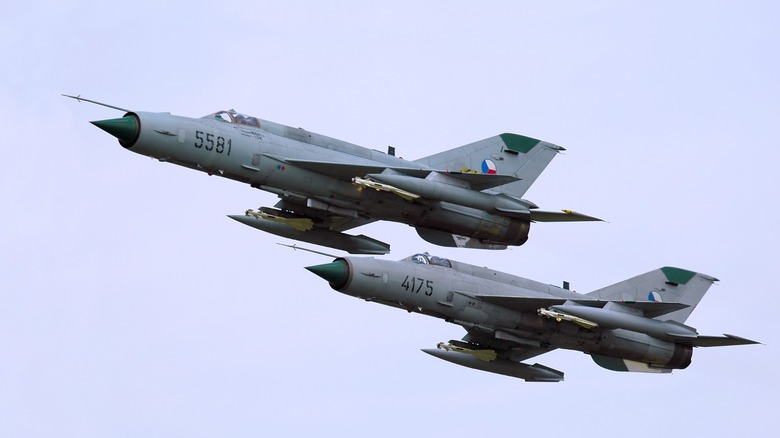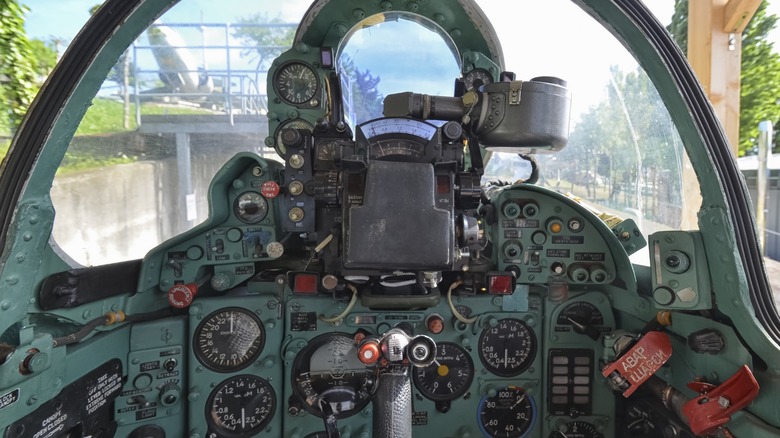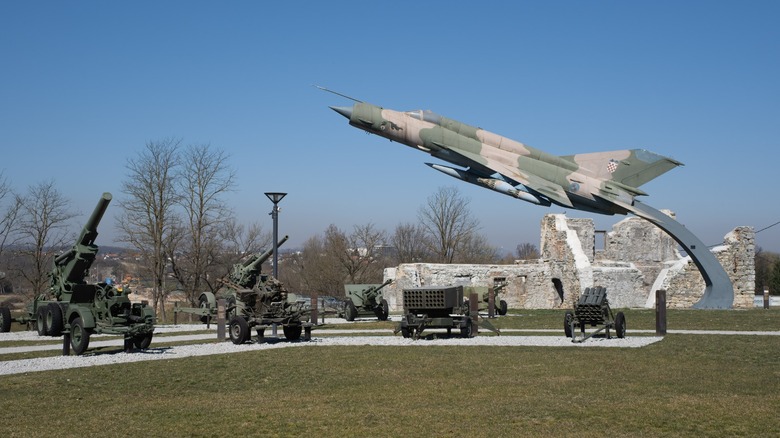What Is The Oldest Fighter Jet Still In Service?
The oldest fighter jet currently in active service is the MiG-21. This plane started testing in 1955 and then entered service with the Soviet Union in 1959. Several other air forces also commissioned it, including India, North Vietnam, and several Arab states like Egypt, Iraq, and Syria.
While the older MiG-17 and MiG-19 still have Chinese derivatives (the F-5 and F-6 Shenyang) in operation, the former is reportedly in poor condition but still in use in North Korea, though there is no way to confirm that they can fly. At the same time, the MiG-19 was introduced in 1962. While other older planes are still in service, like the Boeing B-52 Bomber (1955) and the Antonov An-2 (1949), they're not fighter planes subject to dogfights or supersonic flight.
So, let's go through the history of the MiG-21, the aircraft it faced on the battlefield, and its future, especially as it's certainly old enough to retire.
Entering service in 1959
The MiG-21 is a generational improvement of the Soviet jet fighter family that began with the legendary MiG-15, one of the greatest fighter planes of all time. The MiG-21 was also the second supersonic fighter the Soviets widely operated after the MiG-19, allowing its military to refine the design and account for the effects of supersonic flight on aircraft as they advanced.
This aircraft diverged from the previous MiG designs that used swept wings. Instead, it used a thin delta wing with an added horizontal stabilizer at the rear, giving the aircraft high maneuverability and excellent supersonic performance. It also made it easier for pilots to fly at low speeds, especially during take-offs and landings. The delta wing design made it look similar to its contemporaries, like the American F-106 Delta Dart and A-4 Skyhawk or the French Dassault Mirage IV.
The Soviets armed the MiG-21 with a single internal 23mm cannon and several guided air-to-air missiles. Although designed as a fighter or an interceptor, the MiG-21 could also carry unguided rockets and a 500kg bomb.
Past and current operators
According to a FlightGlobal report (PDF), there are 332 MiG-21s still in active service globally, spread among 15 operators. The biggest operator of the type is the Indian Air Force, which accounts for 128 units or over 38% of the global fleet. However, other air forces that have the MiG-21 include Syria (51), North Korea (26), Angola (23), Yemen (19), and Romania (16).
China also operates the MiG-21-derived J-7, while 11 other countries fly the F-7 export version along with the FT-7 training versions. It means over 1,100 MiG-21s and derivatives are still on active duty 65 years after first entering service.
The MiG-21 has such longevity, it also operated in some countries that no longer exist — including its originator, the Soviet Union. North Vietnam also used this fighter, engaging American jets like the F-8 Crusader, F-105 Thunderchief, and F-4 Phantom II.
Aside from these two, many other countries used to operate the MiG-21, including Afghanistan, Belarus, Bulgaria, East Germany, Finland, Hungary, Poland, Indonesia, and even the United States (using captured ones for defense research and adversary training).
Major engagements
Aside from its deployment in the Vietnam War, it also saw action in South Asia when India used it against Pakistani forces in various operations and engagements, starting with the Indo-Pakistani War of 1965.
Many MiG-21s were also used during the 1967 Six-Day War, the 1973 Yom Kippur War, and the 1982 Lebanon War. Although both sides lost aircraft during these battles, over 100 MiG-21s were destroyed over the course of three decades.
Iraq also used the MiG-21 against Iran during the eight-year Iran-Iraq War, which ran from 1980 to 1988. It also used them against the Americans (or tried to) in the First Gulf War, but they were completely outclassed by the more modern F/A-18s the U.S. Navy had commissioned by then.
Despite their age, the MiG-21s still saw action in the 2010s, notably during the 2012 Syrian Civil War and the Second Libyan Civil War in 2014.
Variants and upgrades
Although the MiG-21 first flew in the late '50s, it doesn't mean it didn't receive upgrades throughout its life. The first-generation MiG-21 had no radar and was armed with light guns and two missiles. The second generation was improved by adding onboard radar and a 23mm twin-barrel gun in an external pod, turning it into an all-weather interceptor.
The third generation added two additional missiles for four total, all mounted on wing pylons. It also introduced a reconnaissance version, which mounted a camera instead of a gun in an external pod. The MiG-21 also received a fourth upgrade, which completely revamped the engine and airframe, giving it better combat performance in low and medium altitudes.
China also made a licensed-built MiG-21 called the Chengdu J-7 (for the Chinese home market) or the F-7 (export version). This licensed-built model also saw three generations, with incremental improvements for each new version.
Aside from these two versions, India also manufactured MiG-21s through a license granted to Hindustan Aeronautics Limited (HAL). This allowed the country to make MiG-21 variants like the Bison.
The MiG-21's future
Despite still operating in several countries, the MiG-21 is reaching the end of its service life. Aside from its aging airframe, improvements in radar tracking, avionics, missile, and air defense technologies, as well as developments in communication and information, mean that this aircraft will soon be (or already is) outclassed by newer jets.
India, the current largest operator, is in the process of retiring its MiG-21 fleet in favor of its homegrown HAL Tejas fighter. As India winds down its maintenance and repair requirements, other operators might soon have trouble keeping MiG-21s in the air, especially if they cannot find suppliers to keep the jets serviceable.
The MiG-21 has a colorful history, and it will be remembered as a favorite aircraft or a formidable opponent. Nevertheless, time and technology continue to march forward, and its age will necessitate retirement.
Nevertheless, because of its ubiquity, you can still find the MiG-21 as a gate guard or as a monument. Some enthusiasts and collectors will also keep them in their private fleets.
